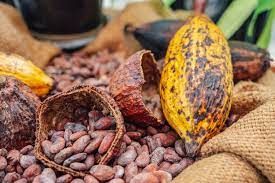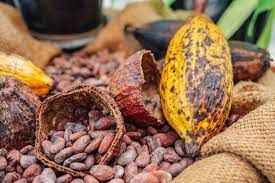MENA - Chocolate And Other Food Preparations Containing Cocoa - Market Analysis, Forecast, Size, Trends And Insights

MENA's Cocoa Market to Grow at +1.2% CAGR, Reaching 408K Tons by 2035 Index Box has just published a new report: MENA - Chocolate And Other Food Preparations Containing Cocoa - Market Analysis, Forecast, Size, Trends And Insights. The MENA market for chocolate and cocoa-based products is poised for growth, with a projected volume of 408K tons and a value of $1.6B by the end of 2035.
This growth is driven by rising consumer demand and is expected to follow the current trend pattern over the forecast period. Market Forecast Driven by increasing demand for chocolate and other food preparations containing cocoa in MENA, the market is expected to continue an upward consumption trend over the next decade.
Market performance is forecast to retain its current trend pattern, expanding with an anticipated CAGR of +1.2% for the period from 2024 to 2035, which is projected to bring the market volume to 408K tons by the end of 2035. In value terms, the market is forecast to increase with an anticipated CAGR of +1.7% for the period from 2024 to 2035, which is projected to bring the market value to $1.6B (in nominal wholesale prices) by the end of 2035.
Consumption MENA's
Consumption of Chocolate And Other Food Preparations Containing Cocoa In 2024, consumption of chocolate and other food preparations containing cocoa increased by 1.2% to 358K tons, rising for the fourth consecutive year after three years of decline. Overall, consumption saw a relatively flat trend pattern. The volume of consumption peaked at 426K tons in 2017; however, from 2018 to 2024, consumption failed to regain momentum.
Production
MENA's Production of Chocolate And Other Food Preparations Containing Cocoa In 2024, production of chocolate and other food preparations containing cocoa increased by 5.3% to 302K tons, rising for the fourth year in a row after three years of decline. Overall, production continues to indicate a relatively flat trend pattern. The growth pace was the most rapid in 2015 when the production volume increased by 9.6%. Over the period under review, production of hit record highs at 380K tons in 2017; however, from 2018 to 2024, production failed to regain momentum.
Imports MENA's
Imports of Chocolate And Other Food Preparations Containing Cocoa In 2024, overseas purchases of chocolate and other food preparations containing cocoa decreased by -8.2% to 98K tons, falling for the second year in a row after two years of growth. The total import volume increased at an average annual rate of +2.9% over the period from 2013 to 2024; however, the trend pattern indicated some noticeable fluctuations being recorded in certain years. The most prominent rate of growth was recorded in 2014 when imports increased by 18% against the previous year. Over the period under review, imports of hit record highs at 114K tons in 2022; however, from 2023 to 2024, imports stood at a somewhat lower figure.
Imports By Country Saudi Arabia represented the largest importing country with an import of around 45K tons, which finished at 46% of total imports. Turkey (11K tons) ranks second in terms of the total imports with an 11% share, followed by the United Arab Emirates (11%), Iraq (5.6%) and Egypt (4.7%). The following importers - Israel (4K tons), Kuwait (2.9K tons), Morocco (2.8K tons), Qatar (2.4K tons) and Oman (1.7K tons) - together made up 14% of total imports.
Exports MENA's
Exports of Chocolate And Other Food Preparations Containing Cocoa In 2024, approx. 42K tons of chocolate and other food preparations containing cocoa were exported in MENA; picking up by 5.6% against 2023 figures. Overall, exports showed a relatively flat trend pattern. The pace of growth appeared the most rapid in 2014 with an increase of 32% against the previous year.
Export Prices By Country
The export price in MENA stood at $4,519 per ton in 2024, growing by 9.5% against the previous year. Over the period under review, the export price, however, showed a relatively flat trend pattern. The level of export peaked at $4,959 per ton in 2016; however, from 2017 to 2024, the export prices failed to regain momentum.
